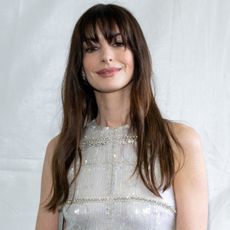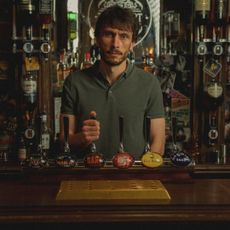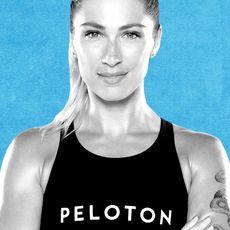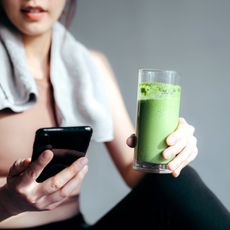
A decade has passed since Forbes magazine introduced its World's 100 Most Powerful Women list, the latest of which was released on Wednesday. In some ways, little has changed. Angela Merkel, the Chancellor of Germany, leads the list for the fourth consecutive year. Yet this year's list has more self-made billionaires, more technology entrepreneurs, and more women using their power in one domain to influence a different sphere. All together, the list contains twenty-eight C.E.O.s (compared with twenty-four last year), eighteen entrepreneurs (two more than last year) and nine heads of state; there are also several entertainers, media moguls, and philanthropists.
To come up with the list, Forbes looks at four factors: money, media presence, impact, and spheres of influence. The names among the top 10 women tend not to shift much year to year (though this year the Federal Reserve chair Janet Yellen made her debut on the list at No. 2, and the General Motors C.E.O. Mary Barra and I.B.M. C.E.O. Virginia Rometty climbed into the top ten for the first time).The philanthropist Melinda Gates, Bill Gates's wife, remains the third most powerful woman in the world; the President of Brazil, Dilma Rousseff, the International Monetary Fund head Christine Lagarde, the former U.S. Secretary of State Hillary Clinton, the First Lady Michelle Obama, and the Facebook C.O.O. Sheryl Sandberg swapped places in an august game of musical chairs.
These days, it's not as novel for a woman to helm a country or a company. Also over the past decade, a new technology emerged that helps bring down traditional barriers to power: social media. "Women are wielding power in ways that didn't exist ten years ago," Moira Forbes, publisher of ForbesWoman, said. "Power has been democratized in some ways." The actress Yao Chen (No. 83) leveraged her fifty-two million followers on the Chinese social media site Weibo to become a "goodwill ambassador" with the U.N. refugee agency. The Cisco chief technology officer Padmasree Warrior (No. 71) is on the list partly because shehas amassed more than 1.4 million Twitter followers.
Power is difficult to calculate, a squishy idea to define much less quantify. But barriers to entry are lower than ever before, thanks to the growing reach of social media. In this new age, Twitter followers and Facebook fans go a long way in cementing one's power, and not only for entertainers like Oprah (No. 14), Beyonce (No. 17) and Angelina Jolie (No. 50). There are several routes to global power – climbing the corporate ladder, becoming a lifelong civil servant, building upon an inheritance, to name a few – but the road traditionally less taken – entrepreneurship – appears to be an increasingly popular path. Take, for example, the three fashion designers on the Forbes list this year, all of whom used their fortunes to support other women. Diane von Furstenberg (No. 68) helps more than a dozen non-profits through her foundation and the DVF Awards to honor women who have changed the world. Tory Burch (No. 79) also has a foundation to provide female entrepreneurs with small business loans and mentoring. Folorunsho Alakija (No. 96), now the wealthiest Nigerian, started a clothing line in the 1980s and began investing in oil shortly after. Now she helps other women, though her Rose Sharon Foundation, which supports widows in Africa.
Still, many newcomers to the list continue to hail from traditional bastions of power: the U.S. Ambassador to the U.N. Samantha Power (No. 63), the Nasdaq president of global information and technology Adena Friedman (No. 69), and the Governor of the Bank of Russia Elvira Nabiullina (No. 72), for example. Meanwhile, the categories into which the powerful women are organized reveals as much about the state of power as the names listed. This year's list is divided into eight spheres of influence: billionaires, business leaders, lifestyle entrepreneurs and celebrities, media moguls, philanthropists, politicians, technology, and finance. (The latter is new this year.) The sixcategories on 2004's inaugural list included executives, women in media and entertainment, and presidents and prime ministers. It also included heiresses, queens and wives.
Most parts of the world are more accustomed to seeing women in positions of power and, as a result, becoming more accepting. That's due in part to the existence of the lists themselves, Nancy Rothbard, a professor of management at the Wharton School of the University of Pennsylvania, told me. Lists are more than a tactic to appeal to our collective desire to sort and classify. They're chock full of "role models for a path that you envision yourself on as a woman," Rothbard said. "It gives a concrete view in your mind that it is possible." The cumulative effect of lists like Forbes', and Fortune magazine's Most Powerful Women in Business, which is limited to corporate executives and 50 at that, then, is larger than the sum of its parts. If you can see it, you can be it.
More Related Articles on Powerful Women:
Stay In The Know
Marie Claire email subscribers get intel on fashion and beauty trends, hot-off-the-press celebrity news, and more. Sign up here.
Meet the New Guard of Powerful Women
The New Power Trip: This Drug Is Helping Powerful Women Become Enlightened
-
 Anne Hathaway Details the "Gross" Audition Request She Once Endured
Anne Hathaway Details the "Gross" Audition Request She Once Endured"Now we know better."
By Meghan De Maria Published
-
 The Emotional Ending of 'Baby Reindeer,' Explained
The Emotional Ending of 'Baby Reindeer,' ExplainedNetflix's latest miniseries from Richard Gadd is based on the true story of the comedian and his stalker.
By Quinci LeGardye Published
-
 The Must-Visit Hair Colorists in New York City
The Must-Visit Hair Colorists in New York CityI trust these talented colorists implicitly.
By Sophia Vilensky Published
-
 Peloton’s Selena Samuela on Turning Tragedy Into Strength
Peloton’s Selena Samuela on Turning Tragedy Into StrengthBefore becoming a powerhouse cycling instructor, Selena Samuela was an immigrant trying to adjust to new environments and new versions of herself.
By Emily Tisch Sussman Published
-
 This Mutual Fund Firm Is Helping to Create a More Sustainable Future
This Mutual Fund Firm Is Helping to Create a More Sustainable FutureAmy Domini and her firm, Domini Impact Investments LLC, are inspiring a greater and greener world—one investor at a time.
By Sponsored Published
-
 Power Players Build on Success
Power Players Build on Success"The New Normal" left some brands stronger than ever. We asked then what lies ahead.
By Maria Ricapito Published
-
 Don't Stress! You Can Get in Good Shape Money-wise
Don't Stress! You Can Get in Good Shape Money-wiseYes, maybe you eat paleo and have mastered crow pose, but do you practice financial wellness?
By Sallie Krawcheck Published
-
 The Book Club Revolution
The Book Club RevolutionLots of women are voracious readers. Other women are capitalizing on that.
By Lily Herman Published
-
 The Future of Women and Work
The Future of Women and WorkThe pandemic has completely upended how we do our jobs. This is Marie Claire's guide to navigating your career in a COVID-19 world.
By Megan DiTrolio Published
-
 Black-Owned Coworking Spaces Are Providing a Safe Haven for POC
Black-Owned Coworking Spaces Are Providing a Safe Haven for POCFor people of color, many of whom prefer to WFH, inclusive coworking spaces don't just offer a place to work—they cultivate community.
By Megan DiTrolio Published
-
 Where Did All My Work Friends Go?
Where Did All My Work Friends Go?The pandemic has forced our work friendships to evolve. Will they ever be the same?
By Rachel Epstein Published